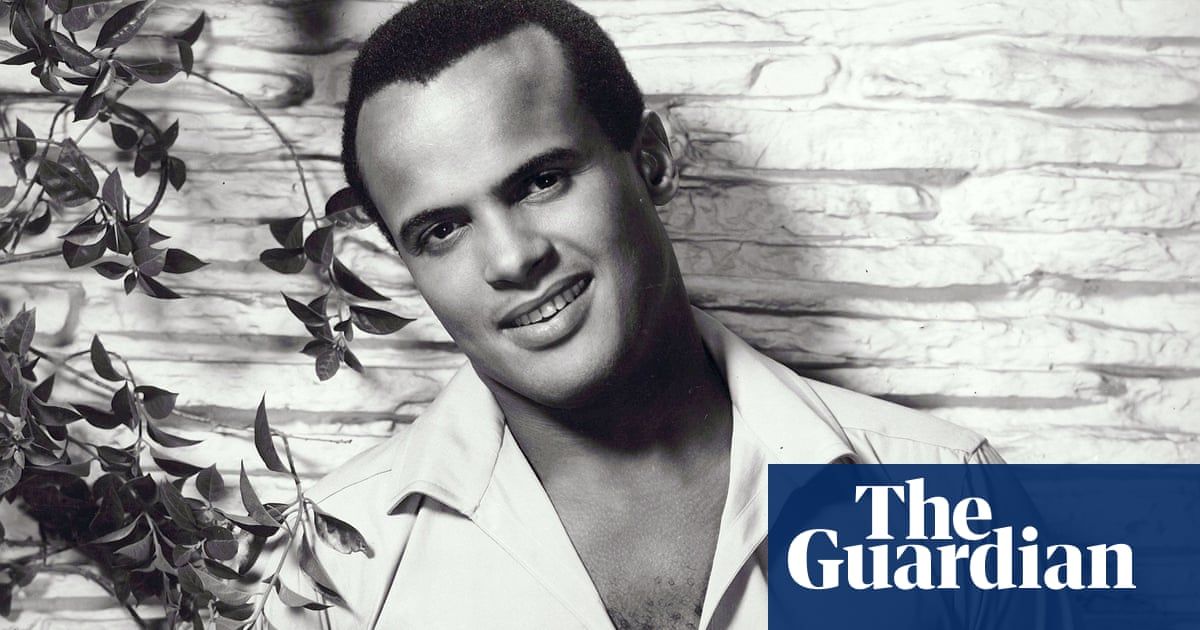Calypso, jazz, orchestral ballads … the astonishing range of Harry Belafonte
The musical story of Harry Belafonte is really a story of 20th-century popular music, and how it draws on influences from multiple places and people, circulating throughout the Caribbean, over to the US and back again. Belafonte was an American of Jamaican descent but he came of age before the development of reggae, so he was influenced by other Caribbean genres popular at the time: Jamaica’s mento – a style of folk music – and calypso, which originates from Trinidad and Tobago.
Even though Belafonte’s most popular album was called Calypso, he wasn’t really a calypsonian, even if some of his most well-known songs drew from that tradition – instead, he was a lover of all music. This genre-jumping approach, combined with his gorgeous voice, is what marks him as a truly great talent.
The Night Has a Thousand Eyes (1949)
While trying to make it as an actor in New York, Belafonte was noticed for his voice and was asked to try out singing. This led to him performing on stage with Max Roach and Charlie Parker and this stunning jazz recording with the Zoot Sims Quintet, giving a totally different take on what became a hit for Bobby Vee more than a decade later.
Matilda (1953)
Yes, Belafonte’s first single was a calypso song, but this had been originally recorded by King Radio, a Trinidadian calypsonian, popular in the 1930s. Belafonte rose to fame on a wave of US interest in this new sound that he generated himself – audiences were enthralled by his puckish storytelling style.
Man Smart (Woman Smarter) (1956)
Belafonte’s version of calypso was so popular that his album Calypso eclipsed even Elvis as the most popular record of the year in 1956 (Shane Vogel’s book Stolen Time: Black Fad Performance and the Calypso Craze covers these heady days). Day-O and Jamaica Farewell are classics, but Man Smart (Woman Smarter) is the real keeper – like Matilda, it was originally recorded by King Radio.
Haiti Cherie (1957)
From the album Belafonte Sings of the Caribbean, this is a song written by Belafonte and Irving Burgie, who taking on the sobriquet Lord Burgess, wrote Day-O from Belafonte’s first album and the majority of the songs on this record. Belafonte’s soft voice floats over the rhythm like the gentle breeze of which he sings.
Jump in the Line (Shake, Senora) (1961)
This began as a song by Trinidadian calypso legend Lord Kitchener, and has been recorded over the years by a range of people, notably Jamaican mento musician Lord Flea who also leaned into calypso as it was becoming popular in the US. Flea’s energetic rendition laid the groundwork for Belafonte’s monster hit from 1961, the recording that popularised the song even more.
Midnight Special (1962)
This folky, country, bluesy, bouncy early 20th-century classic standard from an album of the same name was part of Belafonte’s attempt to not be pigeonholed as solely a calypso artist. There have been numerous versions of Midnight Special, but the full, round tone of Belafonte’s voice makes this one close to perfect. And on the harmonica? A 20-year-old named Bob Dylan.
The Last Time I Saw Her (1970)
Belafonte knows how to make a song his own, and this cover of Canadian Gordon Lightfoot’s 1968 song is an ideal example – the orchestral accompaniment swells as Belafonte exemplifies longing. This wasn’t the only time that he chose a Lightfoot composition: he also tried his hand at Oh Linda and You’ll Still Be Needing Me After I’m Gone, among others.
Suzanne (1970)
Belafonte recorded other folk music such as This Land Is Your Land and songs by Joni Mitchell and James Taylor, and in this live rendition of Leonard Cohen’s classic love song, Belafonte’s voice dovetails beautifully with the ethereal guitar of Sivuca.
New York Taxi (1977)
Even after Belafonte proved he could sing just about anything, he would still return to calypso. This buoyant song about public transportation woes was courtesy of calypsonian Fitzroy Alexander AKA Lord Melody. Belafonte had performed some of Lord Melody’s songs earlier in his career, such as Mama Look a Boo Boo, and Melody then worked and toured with Belafonte after moving to New York in the 1960s.
Skin to Skin (1988)
Alongside Jennifer Warnes, this duet is from Belafonte’s last studio album Paradise in Gazankulu, an album that took a stand against the apartheid regime in South Africa, but didn’t draw too much attention upon release. This slow-burning ballad demonstrates yet another side of Belafonte, this time a strong, unyielding voice that pairs well with Warnes’ plaintive tones.
Source: The Guardian


